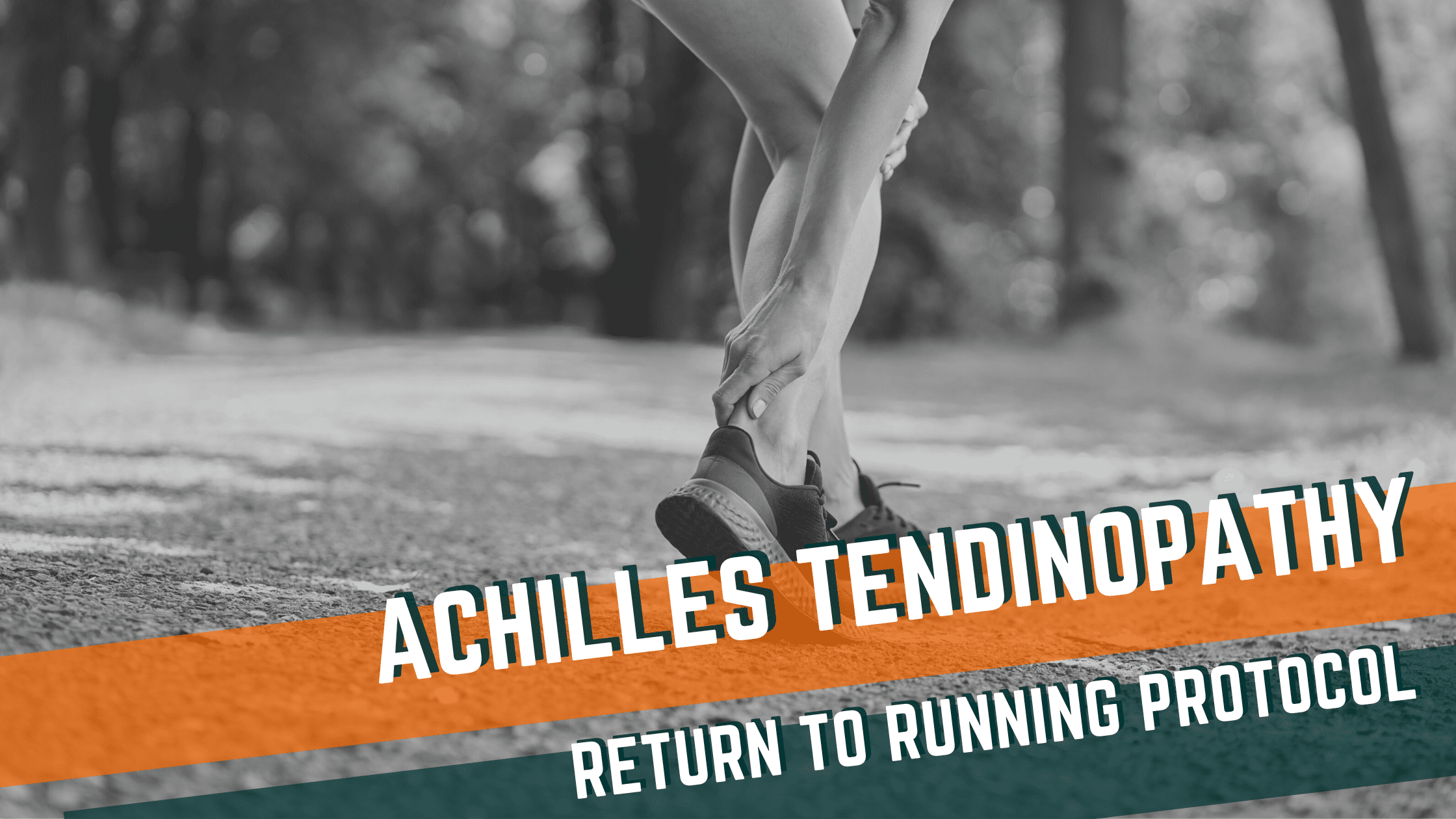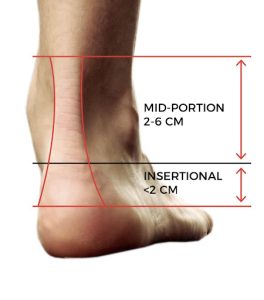
The Achilles tendon is the longest and strongest tendon in the body. It is directly attached to both the gastroc and soleus muscles aka “the powerhouse muscles of distance running. The achilles job is to literally create tension in the foot and knee to propel us forward when running and walking. Because of this, it’s commonly subjected to irritation and inflammation when we ramp up training volume or when we are not recovering optimally. When this happens, the tendon reacts by swelling up and progressively degenerating if it’s not rehabbed correctly, progressing from tendonitis to a tendinopathy. Research shows that full resolution of symptoms and return to sport takes anywhere between six weeks up to a year depending on how irritable the injury is, the overall health of the tendon, and the quality of rehab provided during the recovery process.
Types of Achilles Tendinopathy
There are two types of achilles tendinopathy: mid portion achilles tendinopathy, and insertional achilles tendinopathy. Because the insertional achilles tendinopathy is subjected to compression forces at the bone it can take longer to recover if rehab is not really dialed in.

Hallmark features of achilles tendinopathy include pain when squeezing the tendon, pain with heel raises or hopping, and morning stiffness when getting out of bed.
The Road to Recovery:
Rehabbing Achilles Tendinopathies correctly requires seeing a specialist that is able to diagnose it correctly, has the tools to start to reduce symptoms quickly (massage, myofascial decompression, dry needling), and knows how to progressively get the tendon stronger with specific strengthening followed by plyometric training and then a return to running protocol.
Below is a protocol that we use in the clinic to help our clinical decision making that a client may be ready to trial and start a return to running protocol as long as they meet all the following criteria:
Bilateral Calf Raises:
25 reps, reaching full range of motion and able to keep a 30 bpm cadence with the heel raise (with minimal to no pain)
View Video on YouTube Here: https://youtu.be/tA_ejVyQXrc
Single Leg Calf Raises:
2×25 reps reaching full range of motion and able to keep a 30 bpm cadence with the heel raise (with minimal to no pain)
View Video on YouTube Here: https://youtu.be/x_QiCZoDl84
Weighted Single Leg Calf Raises:
3 sets 6-8 reps at 0.3-0.4 body weight at 30 bpm (with minimal to no pain)
View Video on YouTube Here: https://youtu.be/58j69nRCec0
Pogo Jumps:
1 minute at 150 bpm (with no pain)
View Video on YouTube Here: https://youtu.be/5pEQ0-j440U
Single Leg Pogo Jumps:
30s at 150 bpm (with no pain)
View Video on YouTube Here: https://youtu.be/TtuMsOg02i8
Return to Running After Achilles Tendinopathy
Achilles tendinopathy can turn into a chronic issue that severely limits ones ability to run for years. This is why we stick to a specific protocol like the one listed above to make sure the tendon is healthy enough to trial a run once all five tests are able to be completed without pain. At this phase in rehab when a runner is starting their return to running protocol, we recommend running on flat, hard surfaces at a high cadence which all have been shown to reduce forces at the Achilles compared to alternatives.
Achilles Injuries can be complicated and extremely frustrating when not receiving excellent care. At Onward Physical Therapy we specialize in treating Achilles injuries and get great results with our protocols and interventions that we use to return to running pain free. Click HERE to find your nearest location and schedule a free phone consultation where we can see if you’re a good fit for our physical therapy services.
Recent Articles
Why Early Intervention Physical Therapy Accelerates Your Recovery

What to Expect at Your First Physical Therapy Session?

How to Choose a Physical Therapist

The Top 5 Misconceptions About Physical Therapy

The Complete Guide to Physical Therapy

